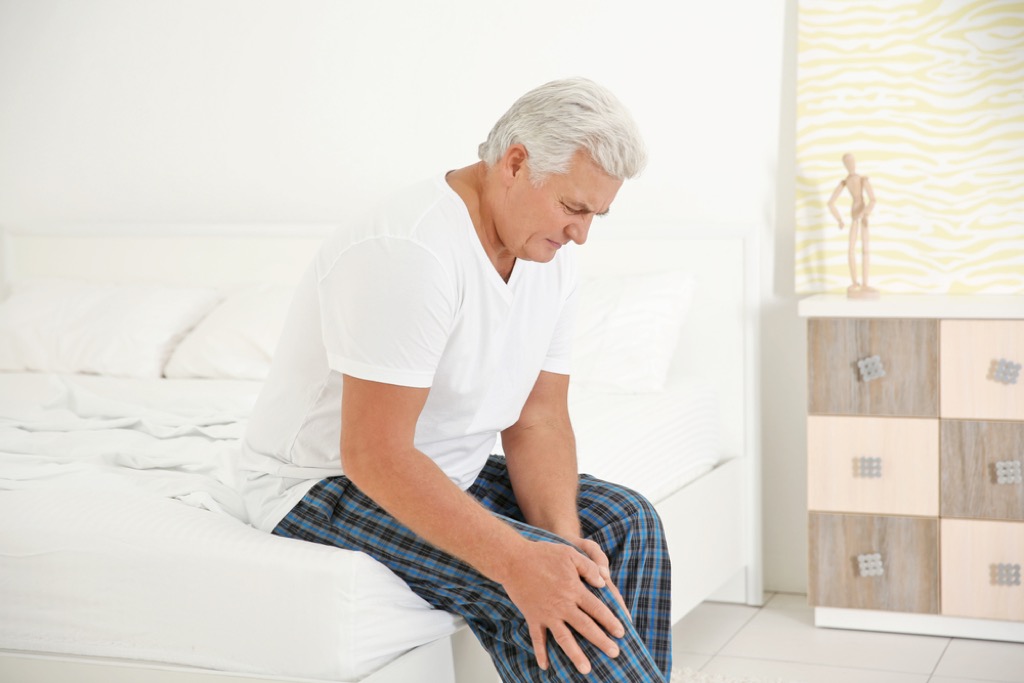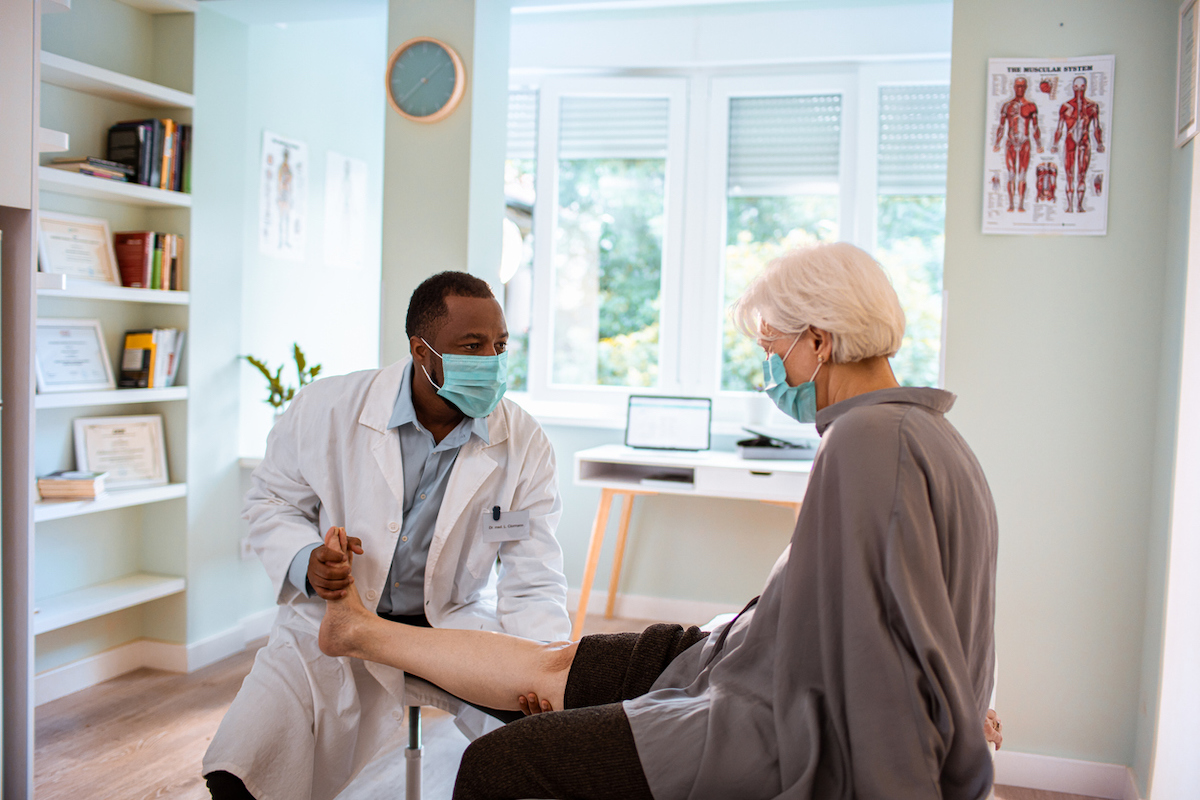For many people, finally getting into bed at night can be the first time of day where the wear and tear on your body becomes noticeable. Whether it’s sore feet from running around or a nagging shoulder injury, certain sensations can become more apparent once you lie down to rest. But if you ever notice this one new seemingly innocent feeling at night, you should make an appointment to speak with your doctor as soon as possible. Read on to see which nocturnal notification your body might be trying to give you.
RELATED: If You Can Do This With Your Thumb, Your Heart May Be in Danger, Study Says.
If you ever find yourself experiencing pain in your leg at night, it could be more than just the result of too much time on your feet. According to doctors, noticing this sensation after you’ve gone to bed could be a warning sign that you have dangerously high cholesterol.
While it can have significant impacts on your health, the level of cholesterol in your bloodstream typically comes with no symptoms that could alert you to anything amiss. But as low-density lipoprotein (LDL)—also known as “bad cholesterol”—begins to build in your along the walls of your blood vessels in a process known as atherosclerosis, it eventually causes a narrowing of the arteries that can impede blood flow, creating a condition known as peripheral arterial disease (PAD).
Eventually, the feet and legs can act as the first red flags, as dense leg muscles are more sensitive to the change. “Initially as the arteries narrow, the pain comes on with exertion due to the muscles running out of oxygen faster, but as it gets worse the pain can come on at night,” Jeff Foster, MD, a general practitioner and founder of H3 Health in the U.K., tells Daily Express.

Doctors say that PAD can also exhibit itself during the daytime as a heavy or “burning” pain anywhere in the leg from the buttock to the calf while walking. But when symptoms present themselves at night, they can often show as spasms or cramps in the toes, forefoot, or heel, Darren Schneider, MD, director of the Center for Vascular and Endovascular Surgery at New York–Presbyterian Hospital/Weill Cornell Medical Center, tells Healthline.
Schneider says that these painful episodes can usually be relieved by dangling your foot off the side of the bed or moving to a chair so that gravity can help blood flow to the feet properly. Still, experiencing these feelings at night should be a sign to call your doctor to schedule an appointment.
RELATED: If You Notice This While Walking, It Could Be a Heart Attack Warning Sign.

Eventually, increased blockage of arteries will lead to more intense symptoms. “Patients may also notice their limb or foot—or wherever is blocked—start to go pale, [get more] cold, get pins and needles, and there is no pulse,” Foster says. “If it is doing this, it is an emergency.”
Since extremities tend to feel colder as we age, Schneider says one telltale sign of PAD can be when one leg feels colder than usual while the other does not. He also says that a change in the color of your leg may happen, shifting from white when it’s raised in bed to reddish or purple when it’s dangled from a chair.

If you’re worried about keeping your cholesterol in check, you’re not alone: the Centers for Disease Control and Prevention (CDC) says that 38 percent of American adults have elevated levels of it in their bloodstream. The agency advises that keeping LDL levels in your bloodstream under control is essential in maintaining heart health, avoiding PAD, and lowering your risk of heart attack or stroke. Besides the late phase leg pain that comes with PAD, the body typically shows no symptoms of high cholesterol and must be monitored through regular blood tests.
The agency recommends checking them with a blood test at least once every five years to stay on top of your health. You can also make changes to your diet and lifestyle to help keep levels under control, such as avoiding foods high in saturated fats. This often includes anything made from animals, such as butter, cheese, or red meat. Instead, try to increase your intake of high-fiber foods like oatmeal and beans. They also suggest healthy unsaturated fats found in foods like avocados, olive oil, and nuts.
You can also combat cholesterol and decrease your risk of PAD by avoiding any tobacco products, which can speed up the hardening of the arteries and increase your risk of heart disease. The agency also recommends staying active by completing 150 to 300 minutes of exercise each week. And if you can, try to learn more about your family’s medical history to see if you should be getting your cholesterol tested more often.
RELATED: If You Notice This When You Cough, It May Be a Sign of Heart Failure.